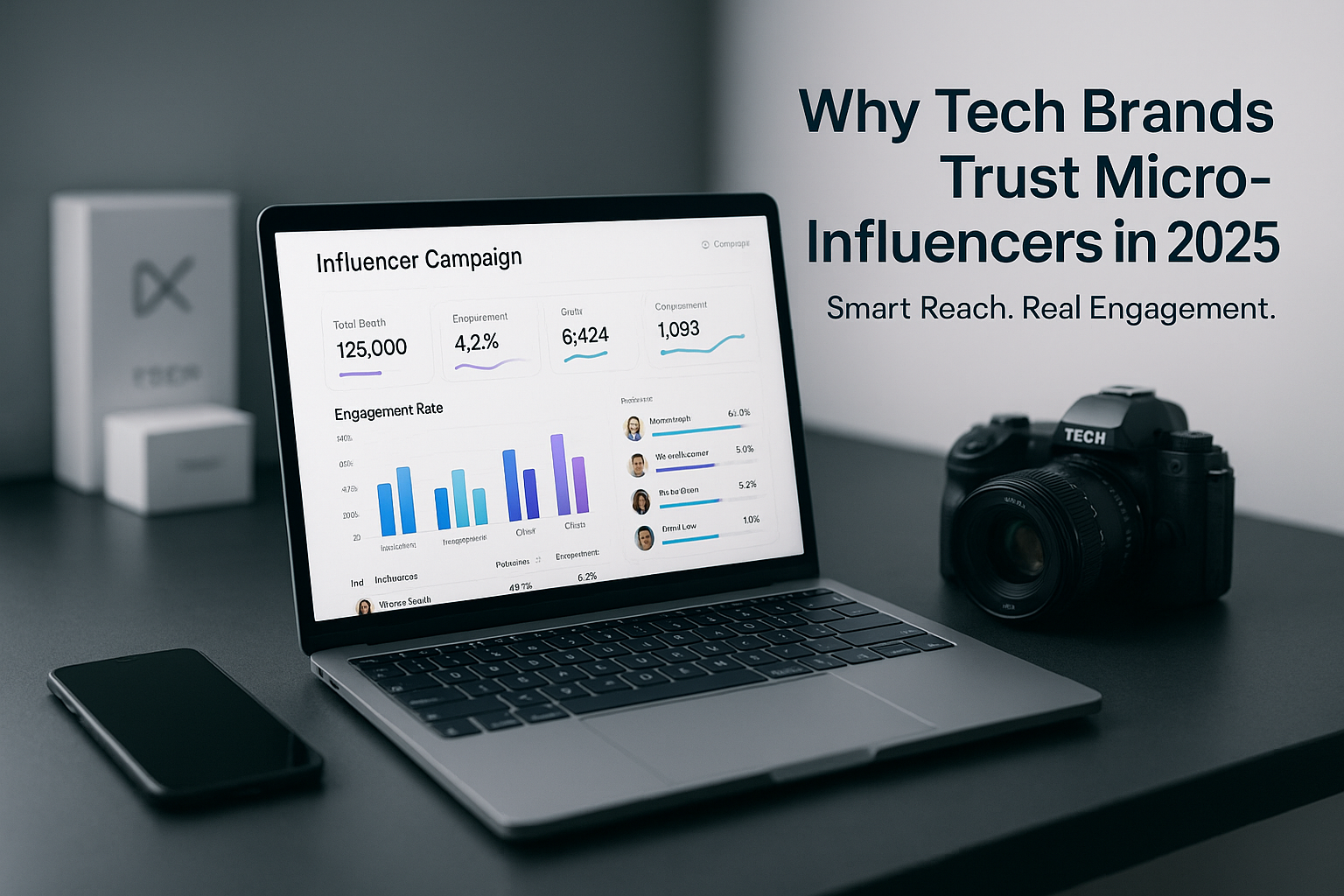When tech brands think influencer marketing, massive follower counts often come to mind – yet a smarter, more effective option is emerging: micro-influencers. According to Puravansh Maitreya, Head of Marketing at Lava International, tech campaigns today need to connect deeply with niche audiences who speak their language and trust their voices.
Let’s explore why, in 2025, partnering with these “hidden gems” is faster, smarter, and more impactful for tech companies of all sizes.
What Makes Micro-Influencers Ideal for Tech Campaigns
1. Engagement Beats Reach
Micro-influencers – typically with 10k to 100k followers – boast engagement rates of 3–4% on platforms like Instagram, compared to just over 1% for macro-influencers . That means each post is more likely to spark meaningful interactions, valuable shares, and clicks – exactly the right momentum for tech products that need explanation and trust.
2. Niche Expertise Drives Relevance
Tech is broad: think productivity tools, home office accessories, or smart home apps. Micro-influencers serve precise niches, like no-code developers or work-from-home moms, making them ideal advocates. By collaborating with the right voices, brands bypass wasted impressions and speak directly to motivated buyers .
Performance + Cost = Smart Marketing
Choosing micro-influencers isn’t just smart – it’s strategic. Working with several micro-creators can cost less than a contract with one macro-influencer, offering more content variety and segmented reach.
Tech brands, especially startups, can stretch budgets further—funding video tutorials, how-to threads, podcast mentions, and tech walkthroughs—while staying cost-effective and performance-driven.
Real Trust, Real Voice
Micro-influencers are seen as real people you follow, not polished media personalities. They offer unfiltered opinions, immersive tutorial content, and genuine recommendations – not sales pitches.
With audiences valuing honesty and clarity, these creators build trust that big stars often can’t. That trust becomes especially critical for tech products that require demos, tutorials, or comparative insights .
Tailored Strategies for Tech Brands in 2025
If you’re a tech brand, here’s how to build your micro-influencer strategy:
• Identify Hyper-Relevant Niches
Use analytics and search tools to find creators aligned with your specific product category—home automation, digital wellness, indie games, productivity hacks.
• Prioritize Long-Term Collaborations
Unlike one-off posts, multi-month partnerships build credibility. Repeated exposure, refinement of messaging, and use-case demos deepen trust .
• Support Creators with Resources
Provide product kits, technical FAQs, tutorial pipelines, and brand guidelines. Equip creators to produce useful, authentic content about your tech tools .
• Measure Impact with Data
Track coupon redemptions, affiliate sales, landing page clicks, demo registrations—not just views. Micro-influencers excel at influencing the consideration stage.
What 2025 Budgets Tell Us
Influencer marketing budgets are rising – especially toward long-term campaigns and creator diversity. Brands now allocate 30–50% of influencer budgets to micro- and nano-influencers, recognizing their high ROI and scalability.
This isn’t a trend – it’s a shift from hyped campaigns to purpose-driven, micro-influencer-first growth strategies.
Real-World Wins for Tech Brands
- A smart-home brand piloted ten micro-influencers showing real-time home automation setups, earning a 25% boost in click-throughs and 15% jump in demo signups.
- A productivity app partnered with established indie tech micro-influencers to create tutorial reels and live Q&A sessions – leading to a 40% increase in app installs and standout engagement.
These aren’t hypothetical wins – they’re proof that trust + context = conversions.
Pitfalls to Avoid
- Choosing the wrong niche: A generic tech influencer won’t resonate go specific.
- One-off posts miss the relationship-building mark aim for ongoing partnerships.
- Lack of support makes creators struggle buffer them with tools, materials, and guidance.
- Ignoring analytics leads to inflated impressions focus on real engagement and conversions.
Final Takeaway
For tech brands rolling out innovative products in 2025, micro-influencers unlock authenticity, edge-to-edge reach, and measurable performance without blowing budgets.
They bring trusted voices into niche communities, convert interest into trial, and support product adoption through explainers and demos.
Big names might get attention – but micro-influencers drive action.
FAQs
Q1. How many followers define a micro-influencer?
Typically between 10,000 and 100,000 followers – large enough for reach, small enough for authenticity.
Q2. Are micro-campaigns measurable?
Yes use affiliate links, coupon codes, and campaign dashboards to track conversions and sales.
Q3. How long should partnerships last?
Three to six months is ideal for building trust and sustained exposure.
Q4. Can tech brands scale micro-influencer programs?
Absolutely – tools and platforms now support discovery, outreach, management, and performance tracking across dozens of creators.
Q5. What content formats work best?
Tutorial videos, unboxing demos, feature comparisons, live walkthroughs, and panel discussions resonate especially well in tech.







